Violating the Bent Knee Portion of the Definition of Race Walking
According to international judge Ron Daniel, 25 percent of all judges’ calls in elite races are for bent knees. In searching through 8,000 photos from Olympic and World Cup race walks we found only 2 instances of bent-knee race walking (Figure 5-1). While there may be more cases that the camera didn’t capture, the lack of photographic evidence is alarming.
Of the elites who were bent-kneed, one case was at a water stop and the other around a turn.
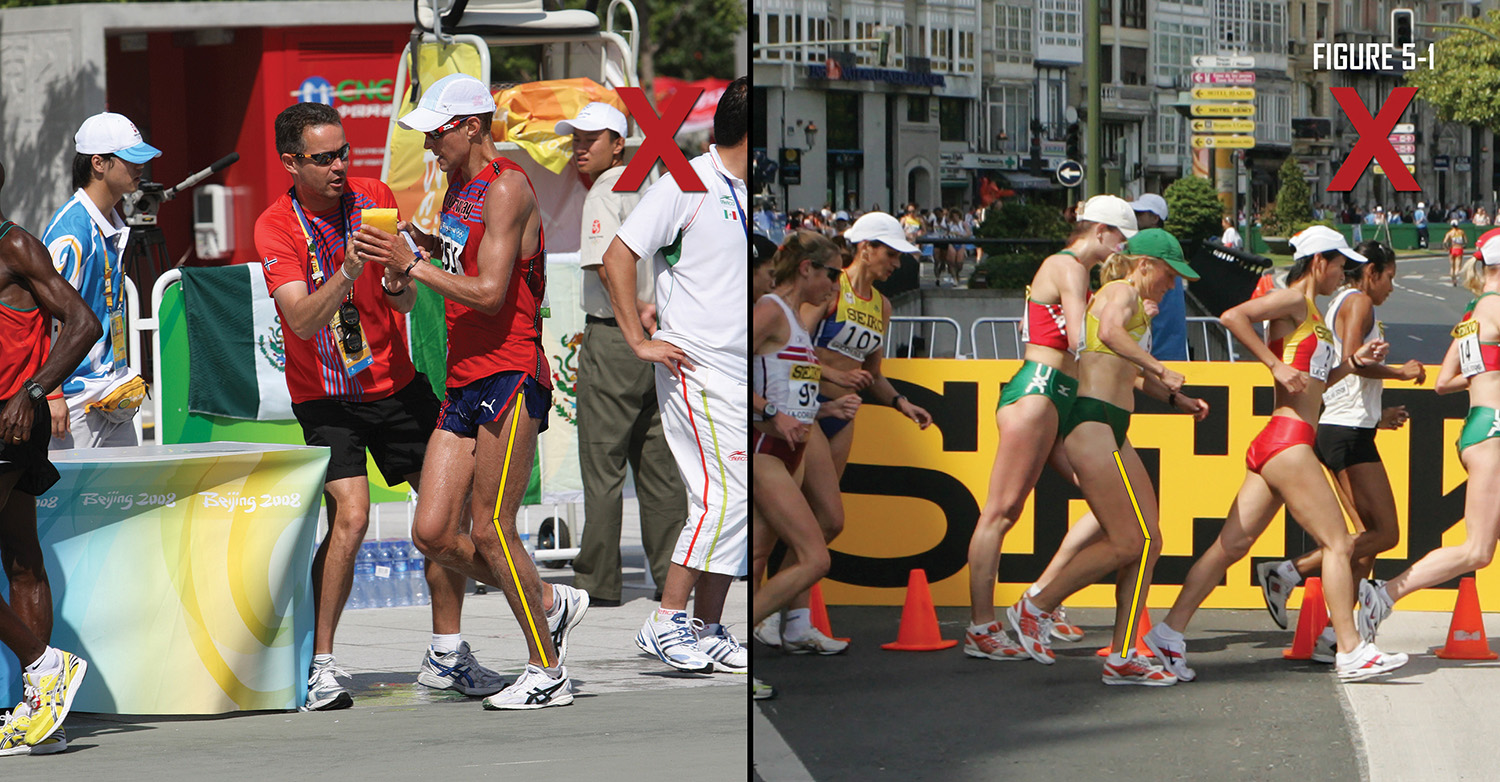
The story is different with masters race walkers and beginners. People come to race walking from a variety of backgrounds, but virtually none of them require, in daily life, that they walk with a straightened knee or the toe pointed as it is at a race walker’s heel strike. Therefore, at first, straightening the knee at heel strike and maintaining a straightened knee until the leg passes under the body may prove difficult.
Let’s review what the knee looks like when a race walker (Figure 5-2 through 5-4) is demonstrating proper race walking technique. The race walker’s leg straightens simultaneously with the heel striking the ground. Then as the walker progresses forward, the leg stays straightened until it is in the vertical position and even beyond.
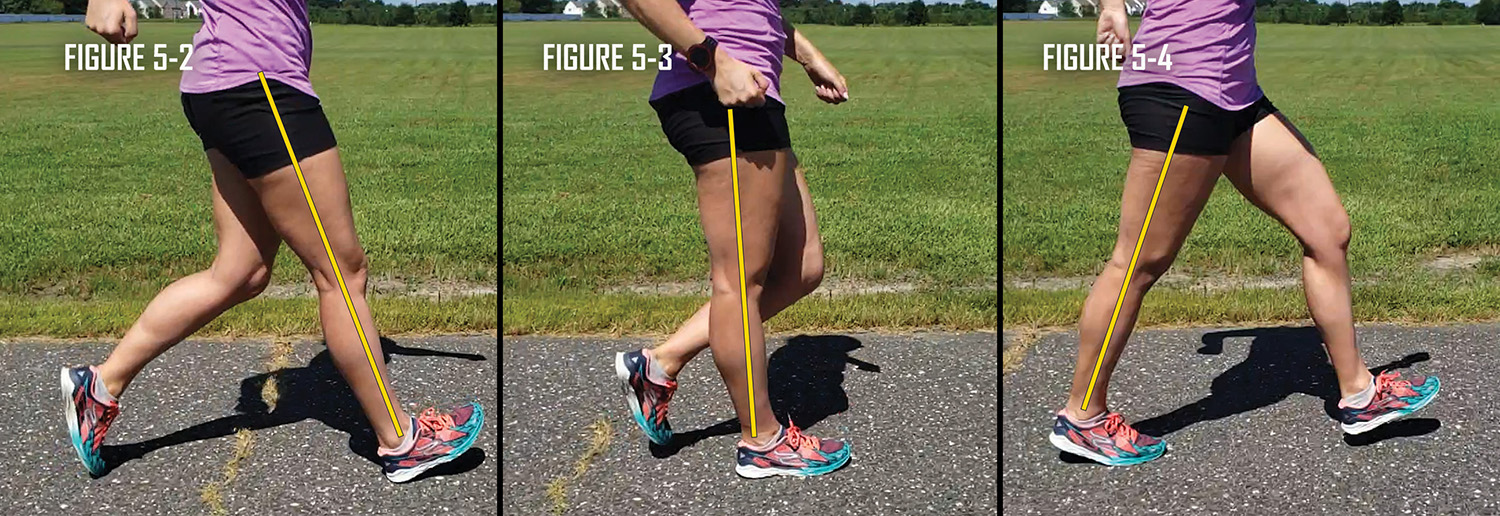
Now let’s contrast the legal walker with a walker (Figure 5-5 to Figure 5-7) that isn’t legal. Walkers that bend their knee come in many varieties. This walker never straightens his knee. Look how they land bent, never having achieved a full extension of the leg. The leg stays bent at the knee as the body’s weight travels over it. Cases like this are easy to discern.
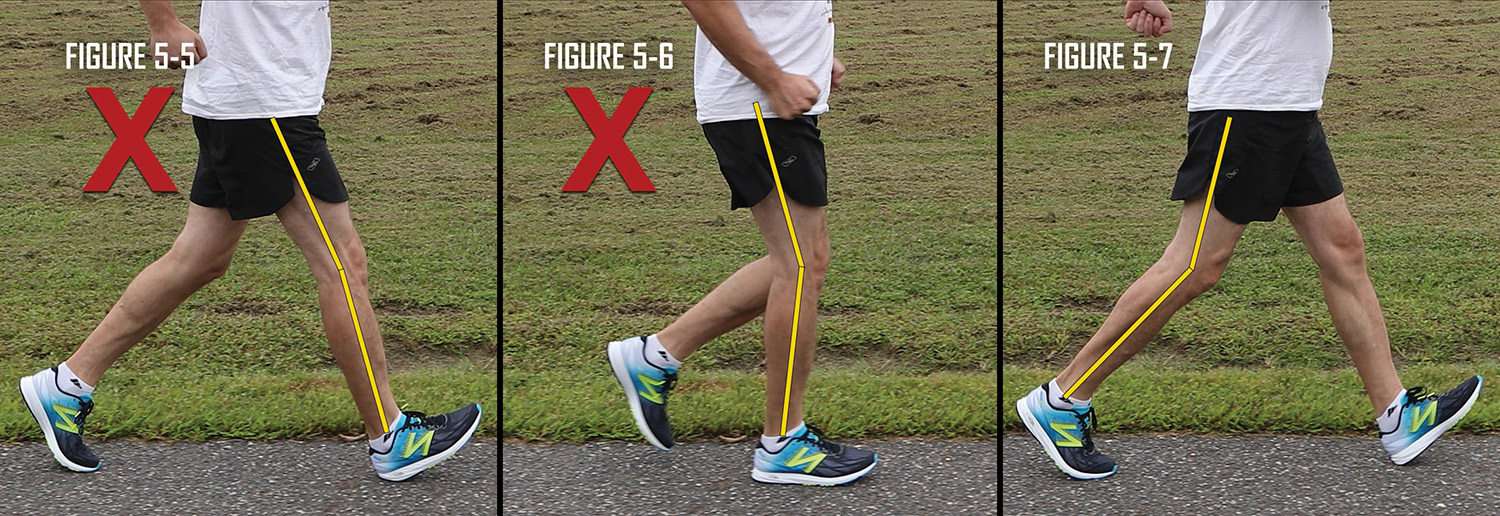
However, let’s look at a subtler case. This walker lands with a fully extended, straightened leg (Figure 5-8), but as their weight travels over the leg, the knee bends (Figure 5-9 & 5-10) and the walker violates the definition of race walking.
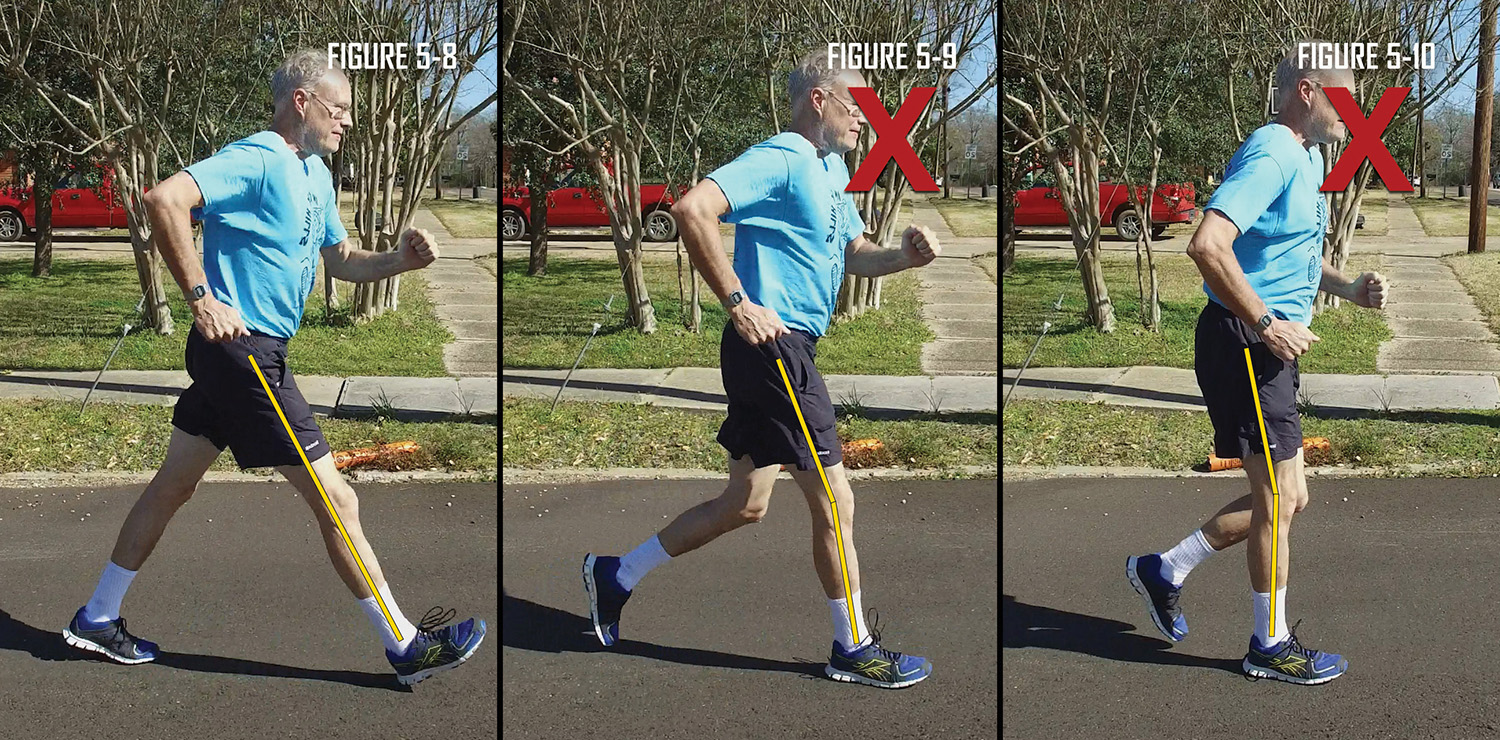
Sometimes walkers land without fully extending their lower leg at the moment the forward heel makes contact with the ground (Figure 5-11), but as they continue to progress through the stride (Figures 5-12 & 5-13) their leg straightens. This is also a violation of the definition of race walking.
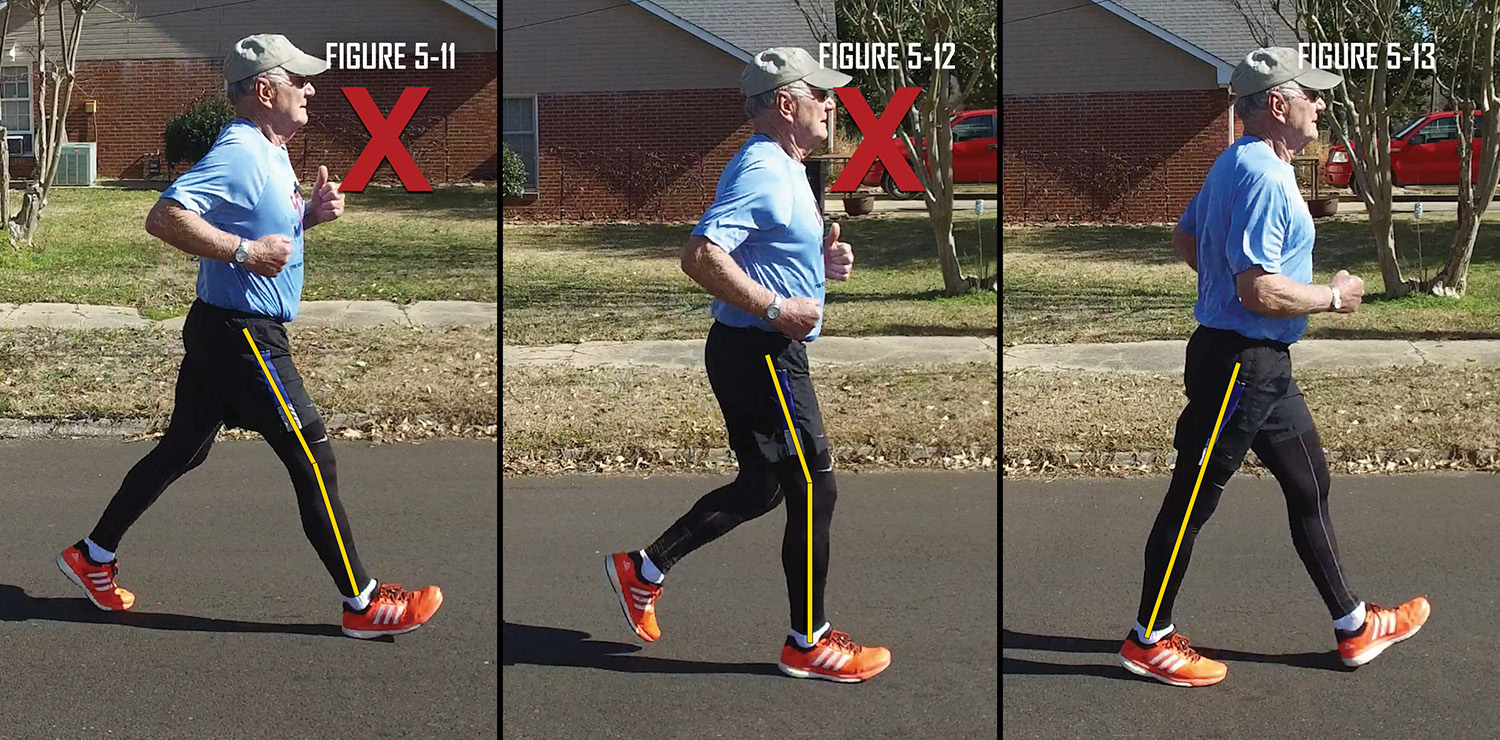
It takes a while to train the knee to maintain a straightened leg.
Don’t despair; there are many corrective actions you can take to straighten up! Your first action should be your focus. There are a few key aspects of the stride, that when concentrated on properly, help a walker land fully extended and remain in the straightened position until the leg is at least past the vertical position.
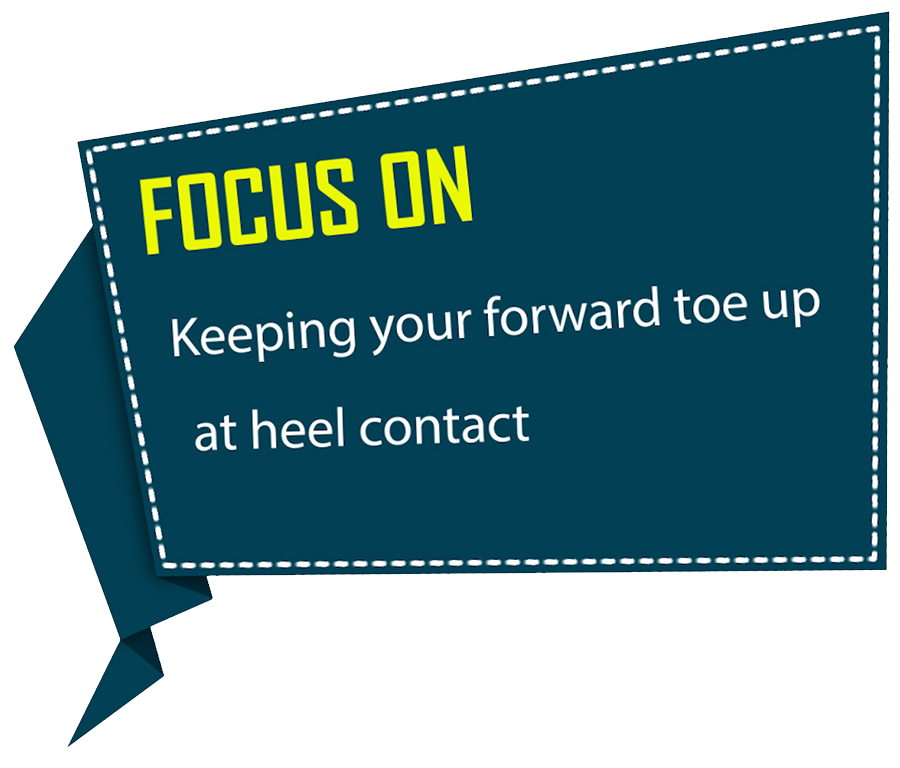
Try landing flatfooted and keeping your leg straightened as your weight is supported by the leg. It’s not easy to do, especially if your foot lands any reasonable distance in front of your torso. See Figures 5-14 through 5-16 where the walker never points his toes off the ground. This is an obvious violation of the definition of race walking.
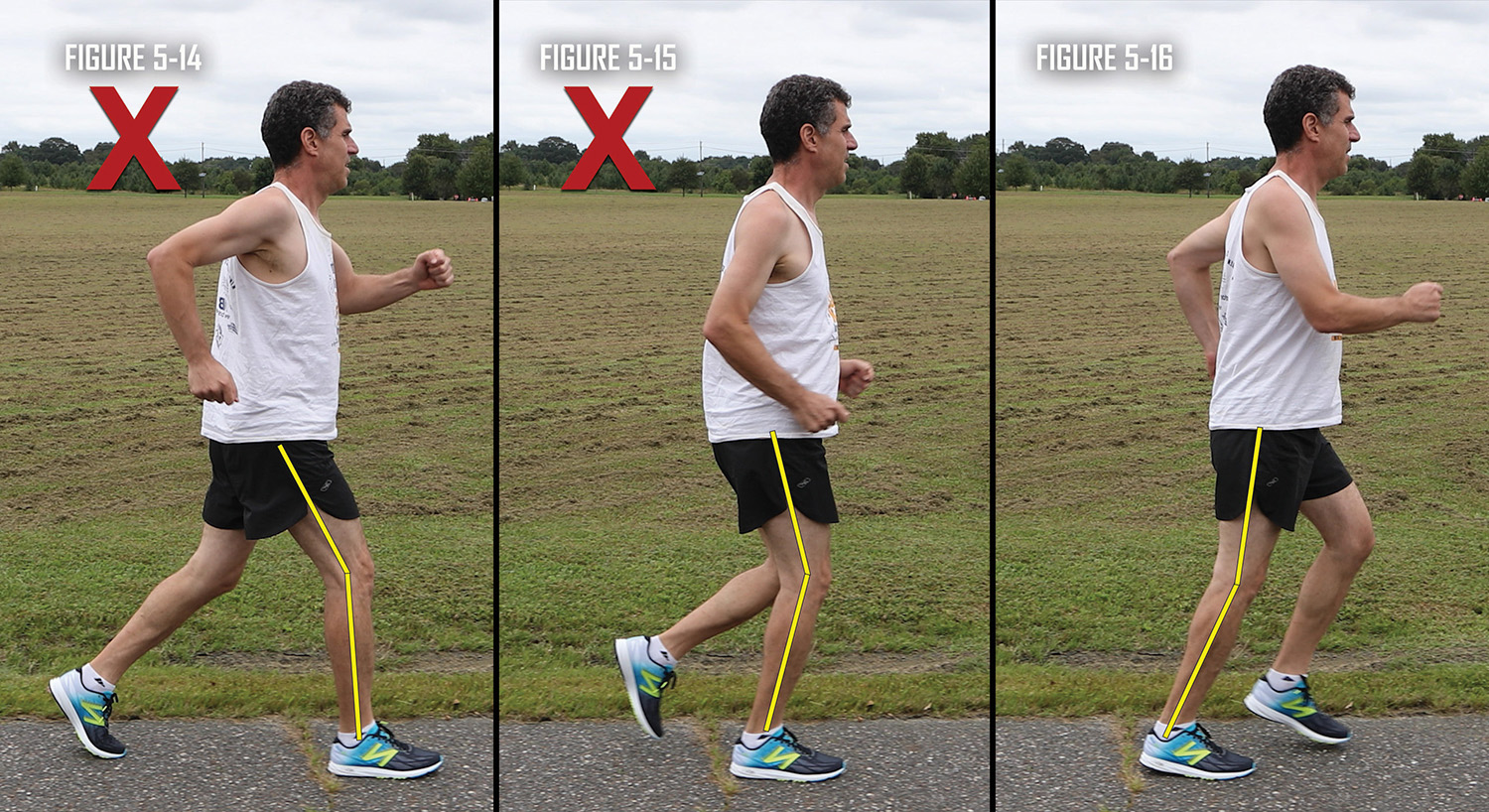
While most people do not land flatfooted when they race walk, you may be like many who land with the toe pointed (Figure 5-17), but then flatten the foot too quickly (Figure 5-18). Therefore, try to focus on keeping the toes of your foot pointed up as your heel strikes the ground (Figure 5-19). Then, as your torso comes forward over the supporting leg, roll through the foot, gradually lowering the toes to a flatfooted position (Figure 5-20). Notice the angle of the leg in Figure 5-18 vs 5-20. While the walker in Figure 5-20 if further along in his stride, his toes are higher off the ground than the walker in Figure 5-18. A simple check is to listen for your toes slapping into the ground. If you hear them, you are not holding them up long enough.
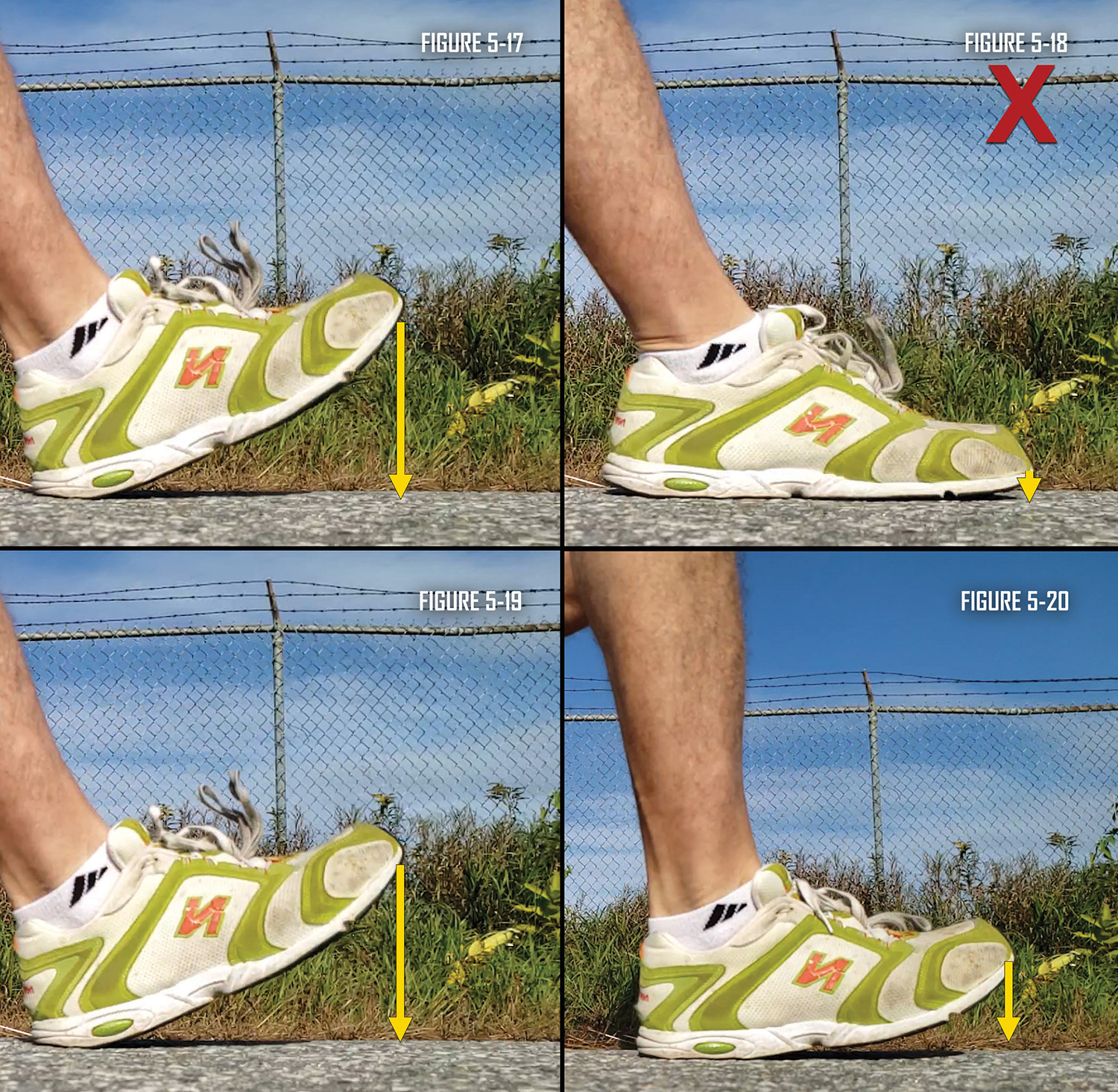
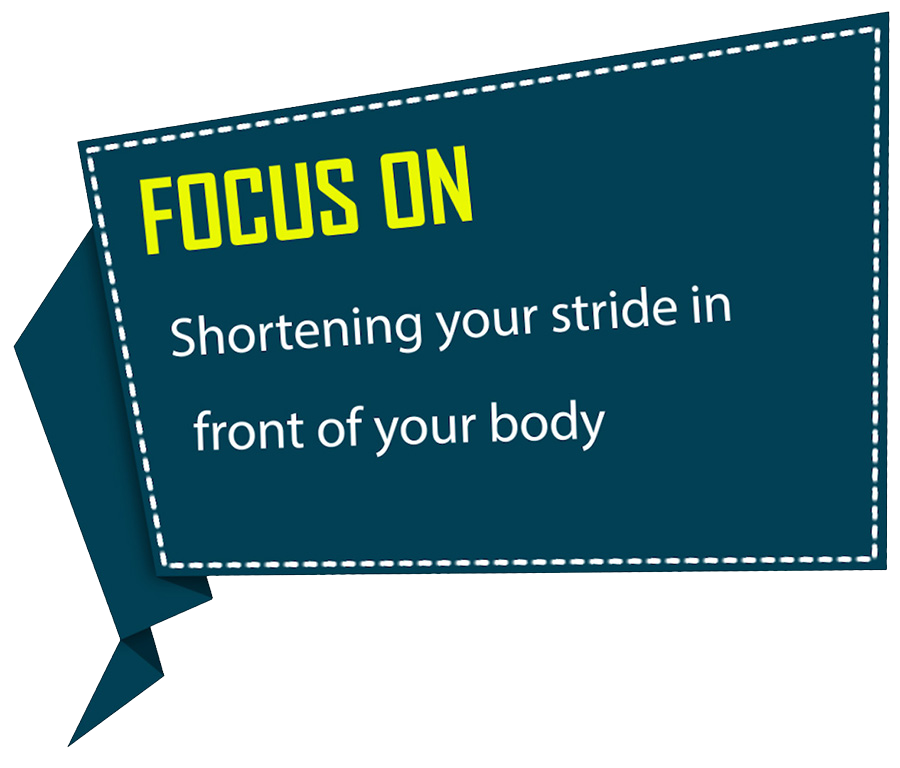
Bent-knee walking is often caused by striking the ground too far in front of the body. If you are over striding while you walk, you may land with a straightened knee (Figure 5-21).
However, as your torso moves forward, the bulk of your body’s weight is loaded onto the supporting leg and the knee begins to bend (Figure 5-22 & 5-23). As it does, the quadriceps muscles fire, attempting to straighten your leg.
If you focus on a shorter stride in front of your body, your leg supports less weight and it is easier for you to keep the knee straightened.
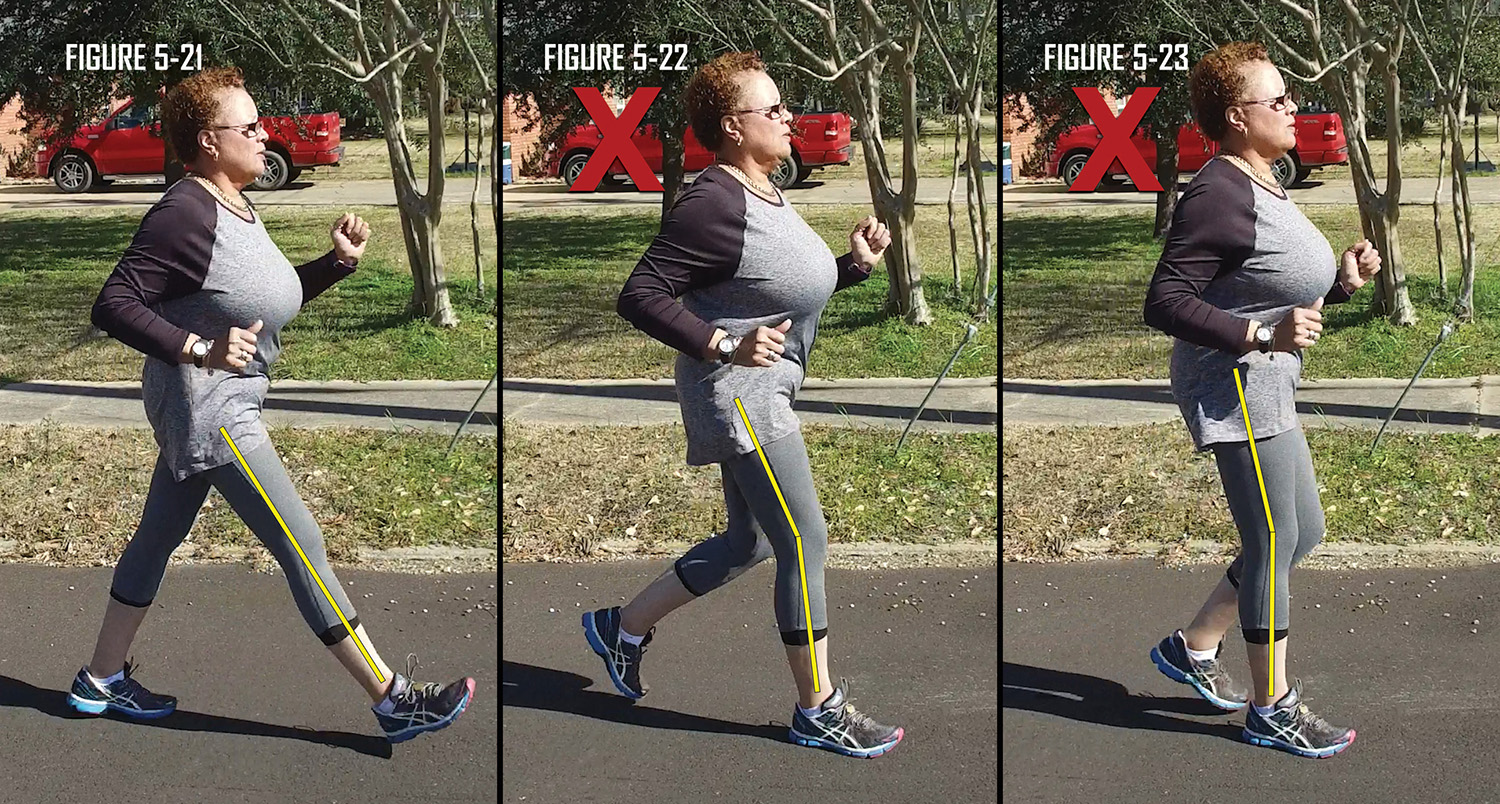
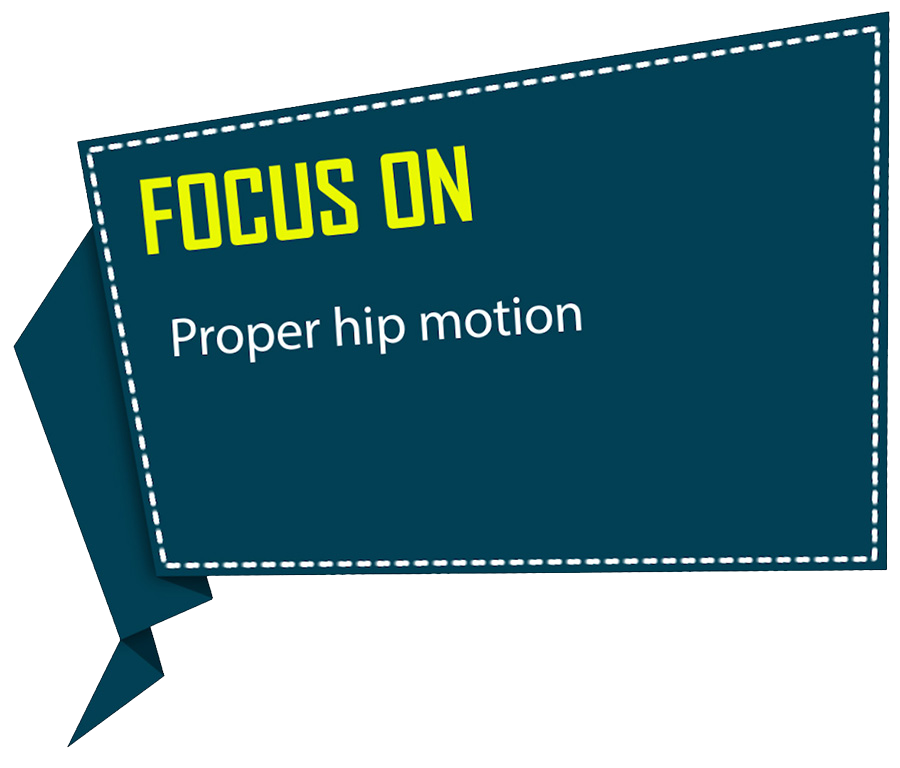
You can also improve the ratio of the step by focusing on proper hip rotation. Observe the effect of underutilizing your hips (Figure 5-24) when contrasted with the same walker simply focusing on driving their hip forward (Figure 5-25). When utilizing more forward hip drive, the walker shifts the ratio of the stride so that even more of their stride is behind their body.
In addition, notice how in Figure 5-25 the walker rolls onto their toes when the foot strikes the ground. This reduces the braking force caused the foot making contact in front of the body. In addition`n to improving efficiency, it also helps with correcting bent knee because less of the step is in front of the body and thus you reduce the time needed to hold the leg in the straightened position.
Finally, while not directly related to correcting bent knee, it’s worth noting that modest improvement in forward hip rotation in this example increases the step length by almost two inches.
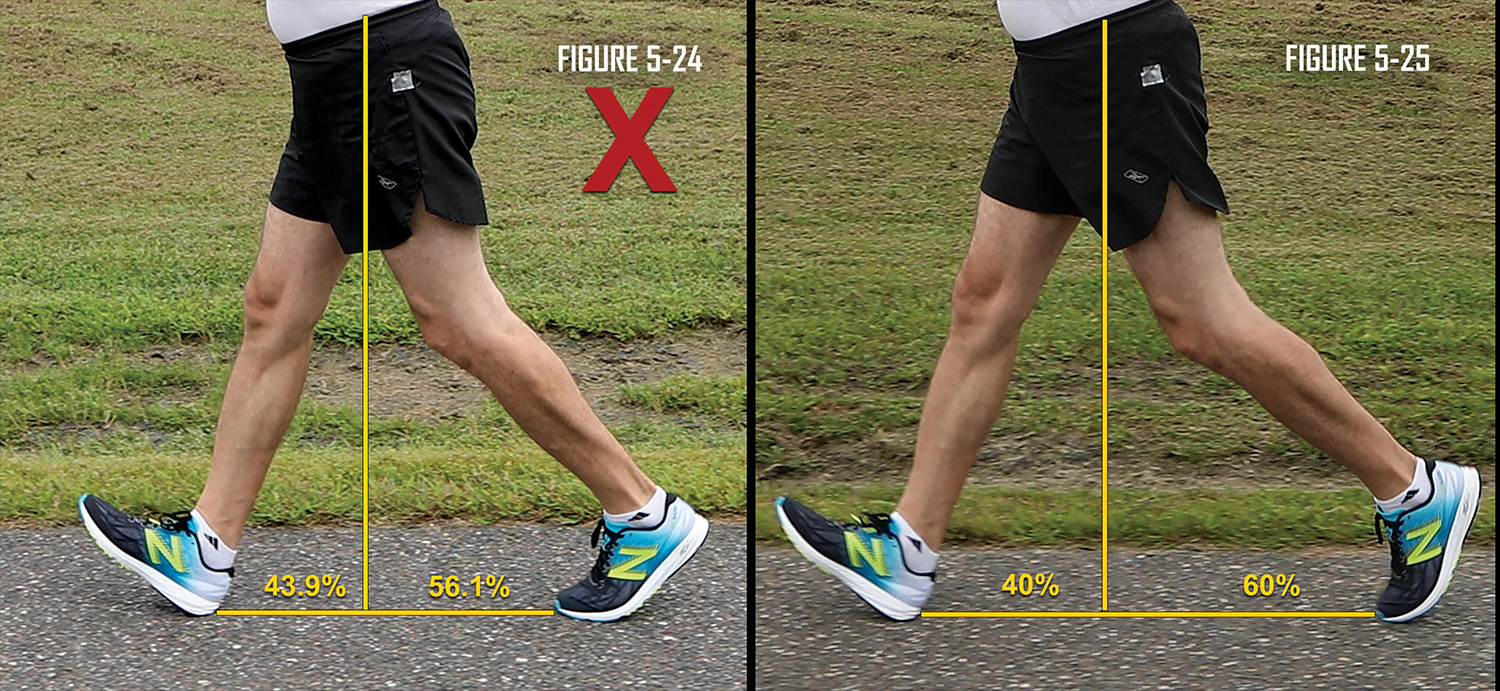
However, focus alone doesn’t usually solve the problem. Strengthening the muscles used to straighten the leg and improving the flexibility of your hips, hamstrings, shins, and calves greatly assist walking with proper legal technique. Therefore, you should include the following exercises and stretches before your workouts.
Next Lesson: Exercises to Correct Bent Knee Walking